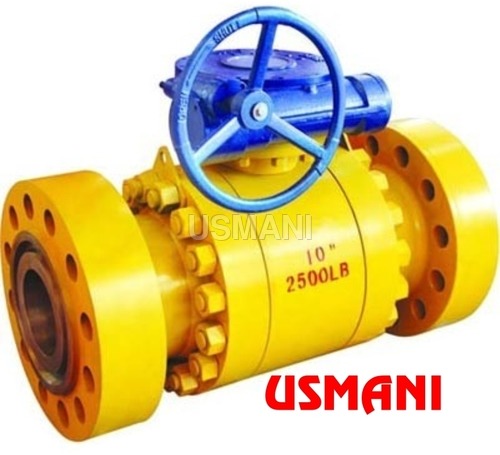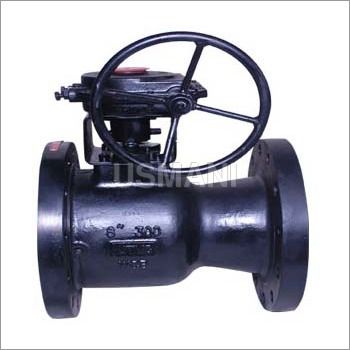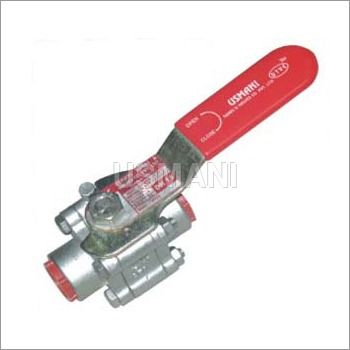2500 क्लास बॉल वाल्व
उत्पाद विवरण:
- रंग Yellow
- मटेरियल पीतल
- मीडिया गैस
- पोर्ट का आकार 1-10 Inch
- फ़िनिश करें Paint
- एप्लीकेशन For Gas Industry
- अधिक देखने के लिए क्लिक करें
2500 क्लास बॉल वाल्व मूल्य और मात्रा
- 1
- टुकड़ा/टुकड़े
- टुकड़ा/टुकड़े
2500 क्लास बॉल वाल्व उत्पाद की विशेषताएं
- गैस
- Yellow
- 1-10 Inch
- For Gas Industry
- पीतल
- Paint
2500 क्लास बॉल वाल्व व्यापार सूचना
- टेलीग्राफिक ट्रांसफर (T/T)
- प्रति दिन
- दिन
- ऑस्ट्रेलिया उत्तरी अमेरिका दक्षिण अमेरिका पूर्वी यूरोप मिडल ईस्ट अफ्रीका पश्चिमी यूरोप मध्य अमेरिका एशिया
- ऑल इंडिया
उत्पाद वर्णन
FULL BORE TRUNNION BALL VALVES
BASIC CONFIGURATION
ASME INTEGRAL FLANGED AND WELDING ENDS
TRUNNION BALL VALVE DESCRIPTION
The trunnion ball valve is a form of quarter-turn valve which uses a hollow, perforated and fixed/supported ball to control flow through it. A trunnion mounted valve means that the ball is constrained by bearings and is only allowed to rotate, the majority of the hydraulic load is supported by the System constraints, resulting in low bearing pressure and no shaft fatigue. The line pressure drives the upstream seat against the stationary ball so that the line pressure forces the upstream seat onto the ball causing it to seal. The mechanical anchoring of the ball absorbs the thrust from the line pressure, preventing excess friction between the ball and seats, so even at full rated working pressure operating torque remains low. This is particularly advantageous when the ball valve is actuated because it reduces the size of the actuator and hence the overall costs of the valve actuation package. Advantages of trunnion ball design is the lower operating torque, ease of operation, minimized seat wear (Stem/ball isolation prevents side loading and wear of downstream seats improving performance and service life), superior sealing performance at both high and low pressure (a separate spring mechanism and upstream line pressure is used as the sealing against the stationary ball for low pressure and high pressure applications). The trunnion is available for all sizes and for all pressure classes but they are not suitable for throttling purposes.
PRODUCT FEATURES
· Standard double block sealing performance.
· Full die forged structure for all pressure containing parts.
· Flanged valves are provided with flanged integral with closure member.
· Standard primary gasket design is OR AED type, secondary emergency seal always provided for firesafe purpose.
· High quality stem gasket for reliable tightness and low emission performance.
· Use of low seat-ball friction materials and surface finish for reliable sealing and long service life.
· Best-in-Class CV values.
· Standard split & bolted design for body-closure connection.
· Low operation torque design.
· Static conduction spring is used as standard between the stem and the ball (Antic-Static Device).
· Anti blow-out proof stem design.
| Specification | Details |
| Design Standard | API 608, API 6D, ASME B16.34 |
| Pressure/Temperature Chart | ASME B16.34 |
| Face to face Dimension | API 6D, ASME B16.10 |
| Fire Safety | API 607, API 6FA |
| Testing Standard | API 6D , ISO 5208 |
| Flange Details | ASME B16.5 up to 24″ |
| Size Range | 2″ – 12″ (DN50 – DN 300) |
| ASME Class | 2500# |
| Bore Type | Full Bore or Reduced Bore |
| Emergency grease | Injection Device for Soft Sealing |
| Materials | Forged Steel: A105 / LF2 / LF3 / F316 / F304 /F316L / F51 / F55 / F6a / Casting Steel: WCB / LCB /LCC / CF8M / CF8 / CF3M / 4A / 6A / Inconel |
| Ball, Stem& Seat Ring | F6a / F316 / F304 / F316L / F51 / F55 / |
| Sealing | Soft Sealing or Metal to Metal |
| Ends | Flange ends, Butt-weld End |
| Operation | Lever, Gearbox, Pneumatic Actuator, Electric Actuator |

Price: Â
- 50
- 100
- 200
- 250
- 500
- 1000+








